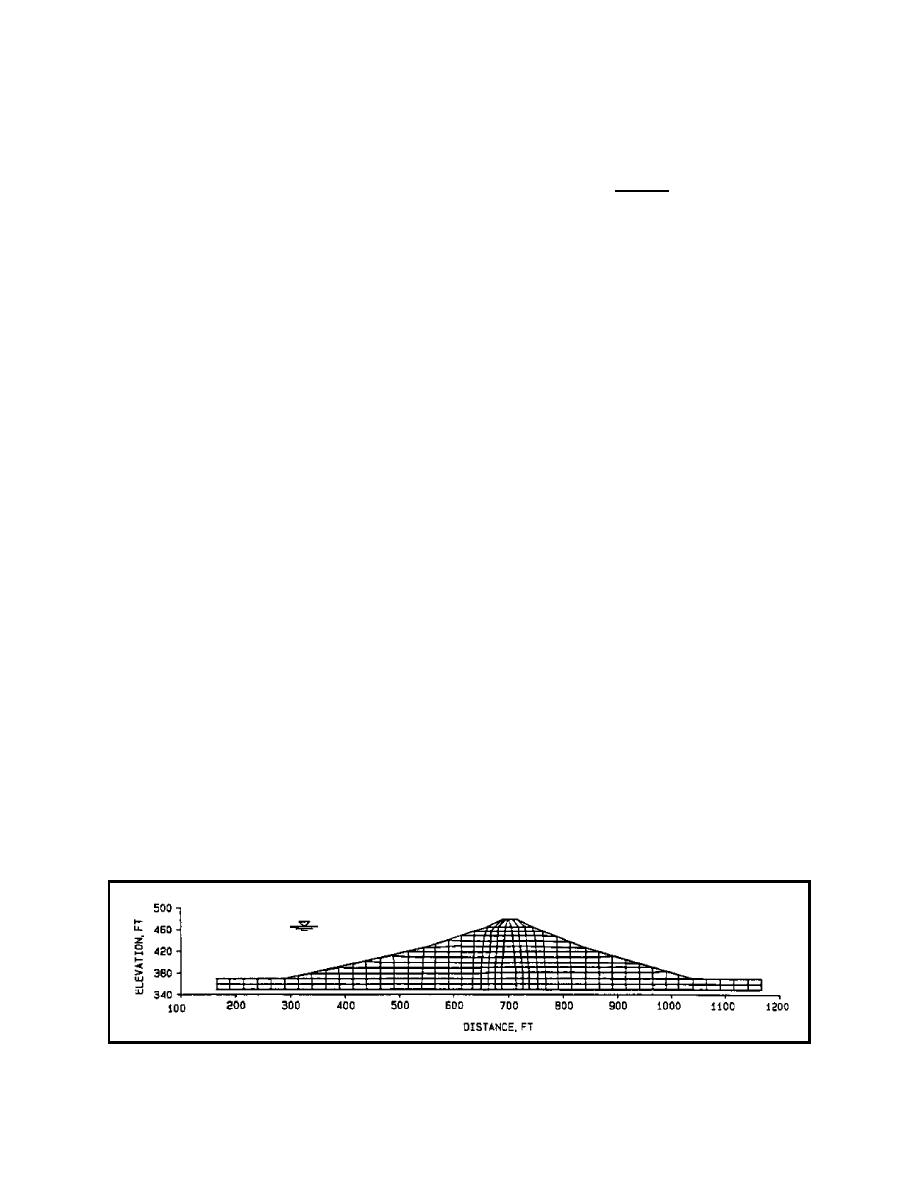
ETL 1110-2-544
31 Jul 95
be analyzed is divided into a number of elements
instrumentation. Finite element analyses thus extend
connected at their common nodal points. A finite
the value of instrumentation studies by filling out the
element mesh used in the seismic analysis of the
picture of behavior that can be derived from the field
Mormon Island Dam of the Folsom Reservoir
measurements. Finite element analyses have also
Project is shown in Figure 1. This mesh contains a
proved very useful for planning instrumentation stud-
total of 297 elements and 332 nodal points. By
ies by showing where instruments can be located to
means of the finite element method, it is possible to
best advantage. In addition, the process of comparing
calculate the complete state of stress in each
calculated and measured results fits very well into the
element and the horizontal and vertical movements
use of the observational method, which offers one of
of each nodal point at each stage in the analysis.
the most reliable approaches for unusual and difficult
The analyses thus provides a very detailed picture
problems.
of stresses, strains, and movements within the
region analyzed. This information has been used to
evaluate several aspects of behavior, including:
1-4. Information Required for Finite Element
Analyses
-
Earth pressures within earth masses and on
retaining structures
a. Nonlinear stress strain behavior. Almost all
-
Earthquake response of embankments and
geotechnical finite element analyses represent the
foundations
nonlinear stress-strain behavior of the soil, because
-
Local failure in slopes, embankments, and
this is almost always a significant factor. To model
foundations
nonlinear behavior, it is necessary to estimate:
-
Pore pressures and seepage quantities in
steady and nonsteady flow conditions
-
The initial stresses (before construction)
-
Pore pressures induced by loading under
-
The strength and nonlinear stress-strain
undrained conditions
behavior of the soils
-
Potential for cracking in embankment dams
-
The sequence of construction operations of
-
Potential for hydraulic fracturing in
other loading conditions to be represented by
embankment dams
the analysis
-
Potential for hydraulic separation between
concrete and soil
b. Stresses in the soil. These three things are
-
Settlements and horizontal movements
needed because the stress-strain behavior of soil
depends on the stresses in the soil. The higher the
b. Comparing results. The finite element
confining pressure, the stiffer the soil (all else being
method complements field instrumentation studies
equal), and the higher the deviator stress, the less stiff
very well because each stage in the analysis repre-
the soil (all else being equal). Also, since the soil is
sents an actual condition during or following con-
inelastic, the strains and displacements that occur
struction. By comparing the results of the finite
depend on the sequence of changes in load as well as
element analyses with measured behavior, the accu-
the load magnitudes. Despite the complexities of soil
racy of the analyses can be assessed. If the calcu-
behavior, the data required for a finite element analysis
lated values are close enough to the measured values to
can be obtained from a more detailed study of the
give confidence in the analytical results, the analyses
same type tests as those required for conventional
can be used to infer information about aspects of
settlement or stability analysis.
the behavior that are not shown directly by the
Figure 1. Finite element mesh for Mormon Island Dam
A-2



 Previous Page
Previous Page
